Since the release of Victory at Sea, each of the game’s fleet’s has continued to expand with the introduction of ever more battleships, carriers, aircraft and more. This weekend more such vessels will be launched on pre-order, providing ever more fleet building options for players of the Royal Navy, Kriegsmarine, IJN, US Navy & Regia Marina!
United States Navy Carrier – USS Enterprise
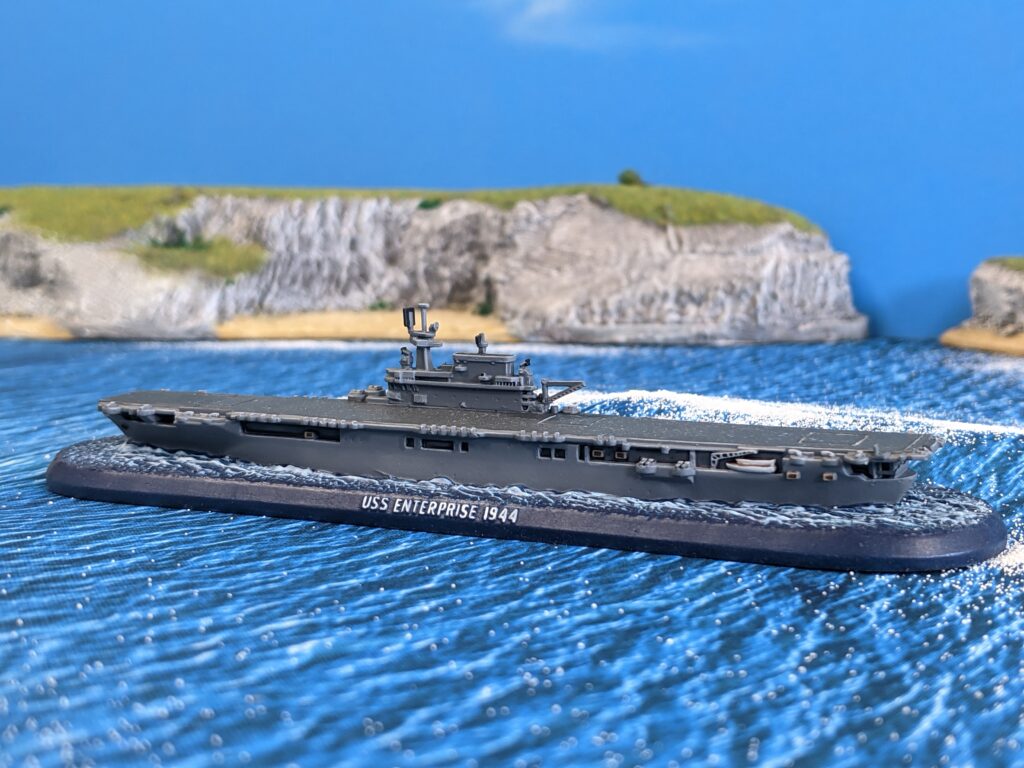
The seventh US Navy vessel to bear the name Enterprise, this Yorktown-class carrier participated in more major actions of the Second World War than any other United States vessel – this is especially remarkable considering she was only one of three US carriers to survive the war. These included the defence of Pearl Harbor – her aircraft were the first carrier-borne aircraft to suffer casualties in the Pacific theatre.
Subsequently, she fought in the Battle of Midway, the Battle of the Eastern Solomons, the Battle of the Santa Cruz Islands, the Battle of the Philippine Sea and the Battle of Leyte Gulf, amongst others. At the close of the war, her planes and guns had claimed an impressive tally – 911 enemy aircraft, 71 enemy vessels and heavy damage inflicted to 192 additional ships.
The Yorktown-class of carriers were built in a series of three; of those only the USS Enterprise survived the war, with the USS Yorktown sunk during the Battle of Midway, and the USS Hornet during the Battle of Santa Cruz. The USS Enterprise became the most frequently decorated US carrier of the war, even earning the British Admiralty Pennant, the only ship outside of the Royal Navy to do so. She was finally put out of action in 1945 by a kamikaze attack that severely damaged the hangar deck.
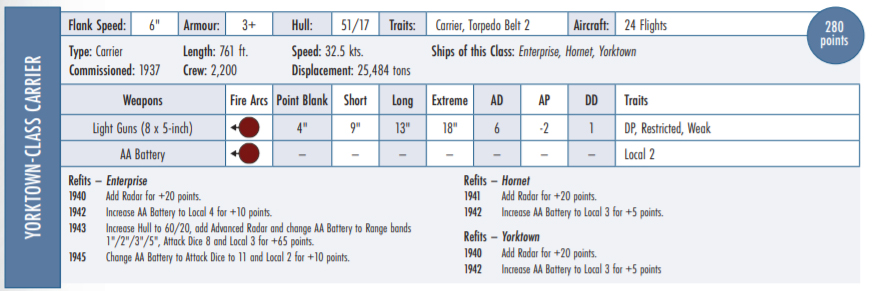
Imperial Japanese Navy Battleship – Kirishima
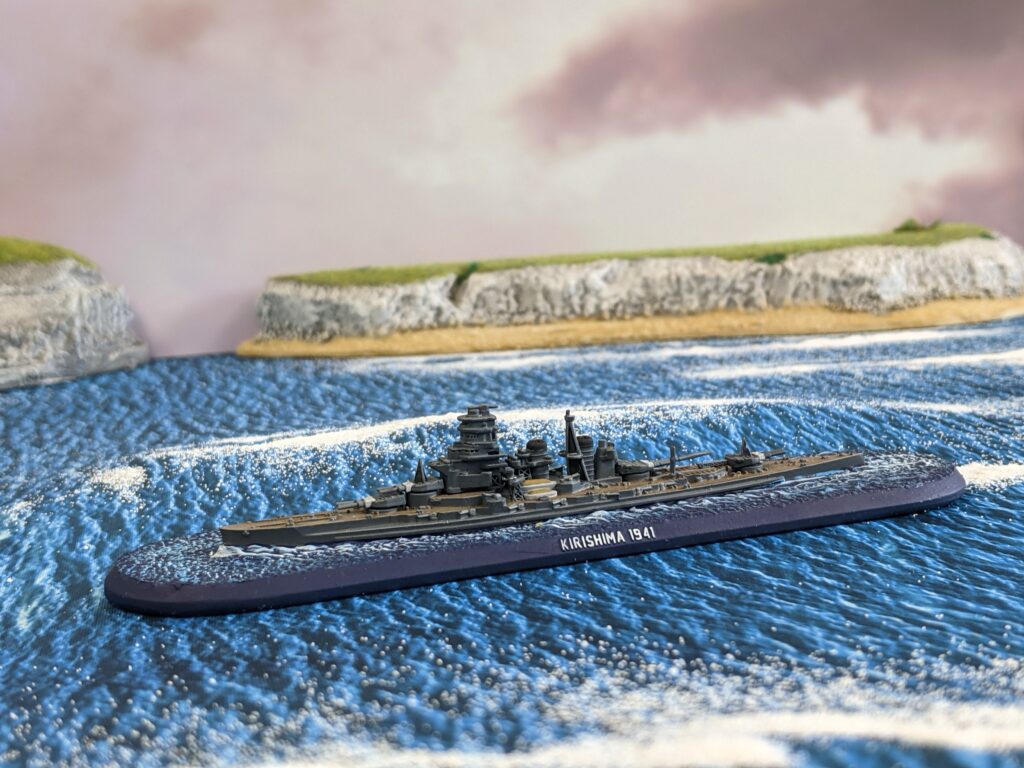
The Kongō-class, dating from 1912, was rebuilt between 1927 and 1931 and was thereafter re-rated as a battleship. Armed with eight 14-inch guns in dual turrets and a secondary battery of sixteen 6-inch guns, the Kongō was further rebuilt in the late 1930s.
Kirishima was part of the escort to the carriers that attacked Pearl Harbor in December 1941. She then participated in landings at Rabaul and in the Dutch East Indies, and in March 1942 she sank the American Destoryer USS Edsall south of Java.
Sister ship Hiei and Kirishima were both lost off Guadalcanal; Hiei was disabled after taking fifty or more hits from 8 inch and smaller shells, and finally sunk by air-launched torpedoes. Kirishima fell prey to USS Washington, shattered by the battleship’s radar-directed gunfire.
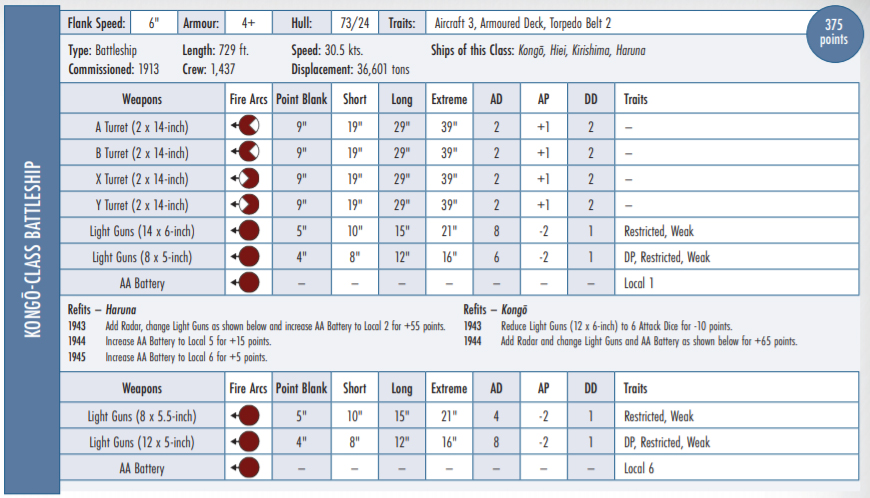
Kriegsmarine Battleship – Schleswig-Holstein
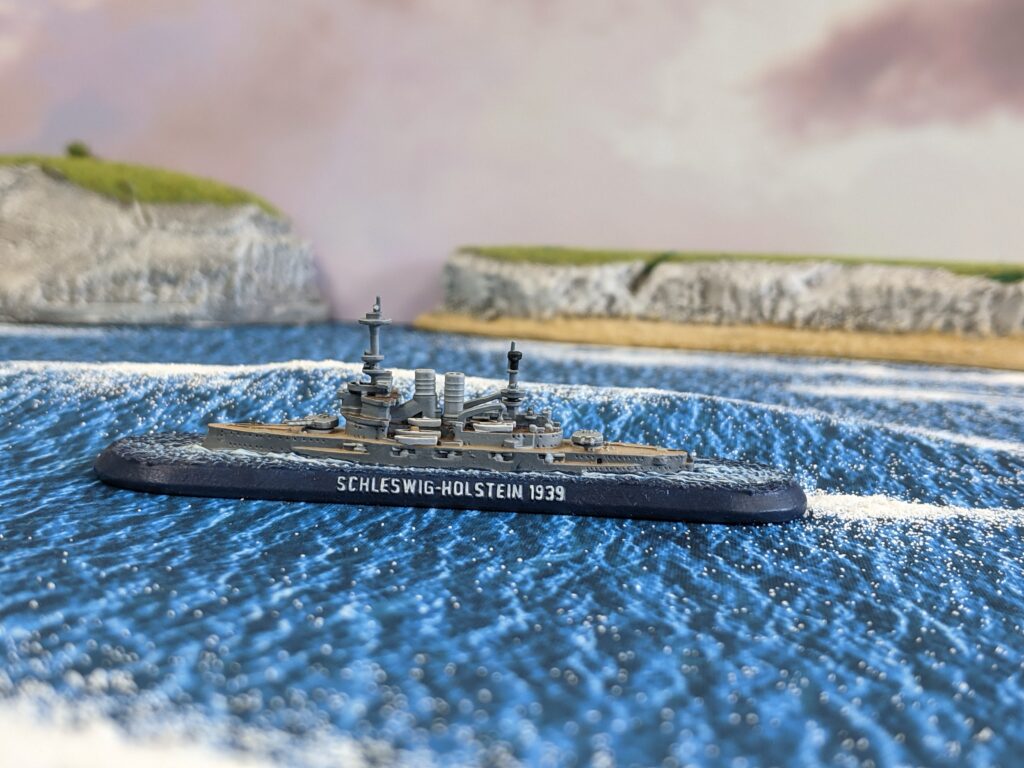
The pre-dreadnaught era Schelswig-Holstein enjoyed the dubious privilege of firing the opening shots of World War Two. Her barrage of the Westerplatte in Gdansk heralded the start of the German attack on the city.
For the majority of the war, she served as a training vessel. Sunk by British bombers in Gotenhafen in December 1944, she was scuttled in March 1945, and some of her armour was taken to the Westerplatte to be used in sculptures commemorating the defence of the city of Gdansk in 1939. That would not be the end for the ship, she was salvaged by the Soviet Navy to be used as target practice off the coast of Finland until as late as 1966.
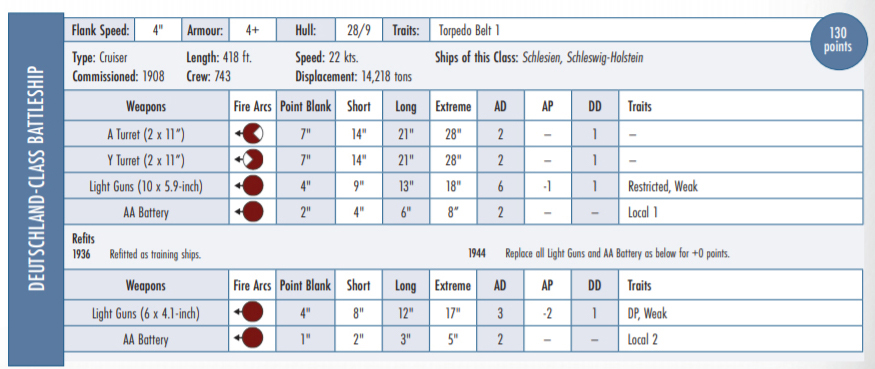
Royal Navy Battleship – HMS Prince of Wales
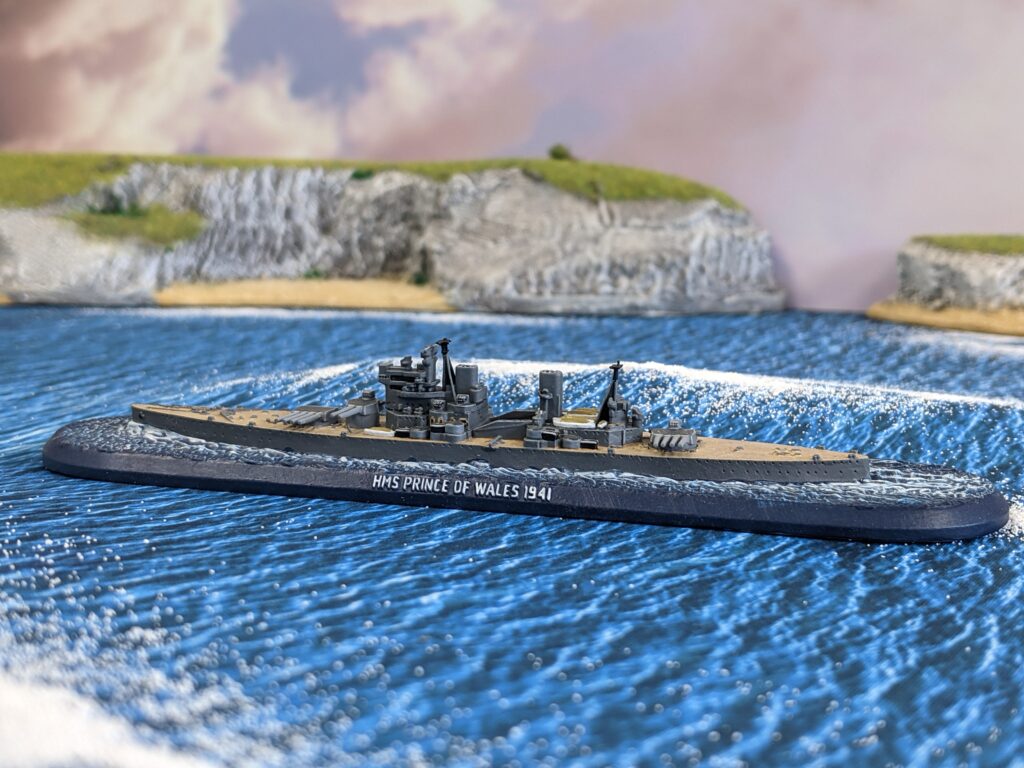
Built to defend Britain in the war that was clearly coming, the King George V-class of battleships compromised their main armaments, which were reduced to 14-inch guns, to fulfil treaty obligations. However, by mounting ten of them, the HMS King George V could pack a fearsome punch. It was also very fast for such a well-armoured ship.
The HMS Prince of Wales was launched in 1939 and completed in 1941. In May of that year, she was a key participant in the hunt for the BIsmarack, and though she took hits from the mighty Kriegsmarine battleship, she survived to tell the tale. In August, she was tasked with transporting Winston Churchill to a historic meeting with FRankilin D. Roosevelt.
Later in 1941, she was deployed with the HMS Repulse and four destroyers, along the Malayan Coast, in a last-minute defence against Japanese invasion. On December 10th both she and Repulse were sunk by Japanese aircraft. HMS Prince of Wales had only been operational seven months.
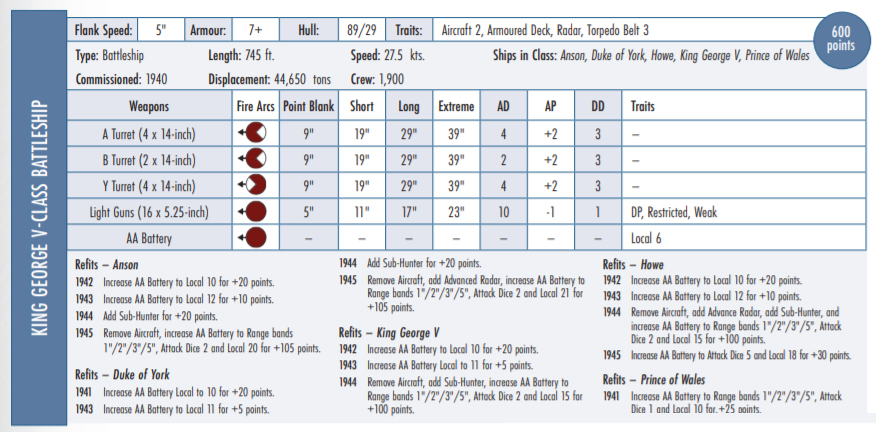
Regia Marina Cruiser – Emanuele Filiberto Duca d’Aosta
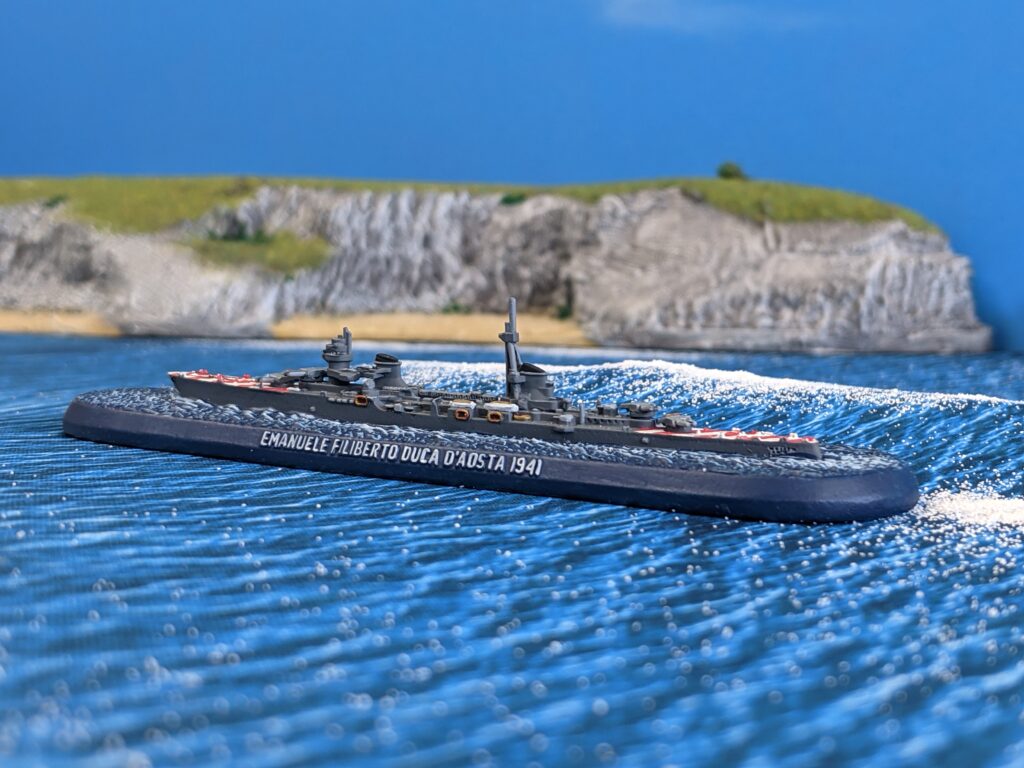
This class was another extension of the Regia Marina’s Condottieri (military leaders) concept, representing another step in producing a good, all-round cruiser design. It aimed to improve stability and protection once more, while keeping the armament similar to that of the previous class. In this new design the weight of armour was increased still more over that of the Montecuccoli-class. In trials, speeds of around 37.3 kts were achieved.
D’Aosta was part of the 2nd Cruiser squadron at Italy’s entry into the war, participating in the battle of Punta Stilo, protecting North African convoys and later laying minefields off the coast. In 1942 her actions were more aggressive in nature, the operations she was involved in (like Harpoon and Vigorous) aimed to disrupt Allied convoys to resupply the beleaguered island of Malta.
Following the Italian Armistice, she served under the Allies in Blockade duties, based at Freetown. She was a “lucky ship” in that she was never damaged in any actions in which she participated, nor by air or submarine attack.
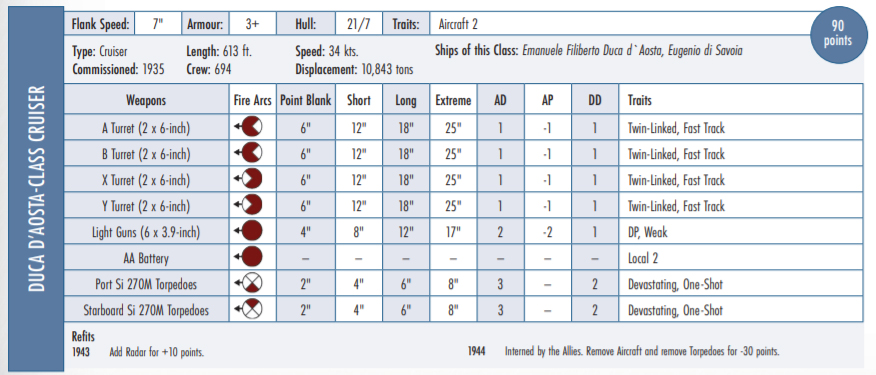
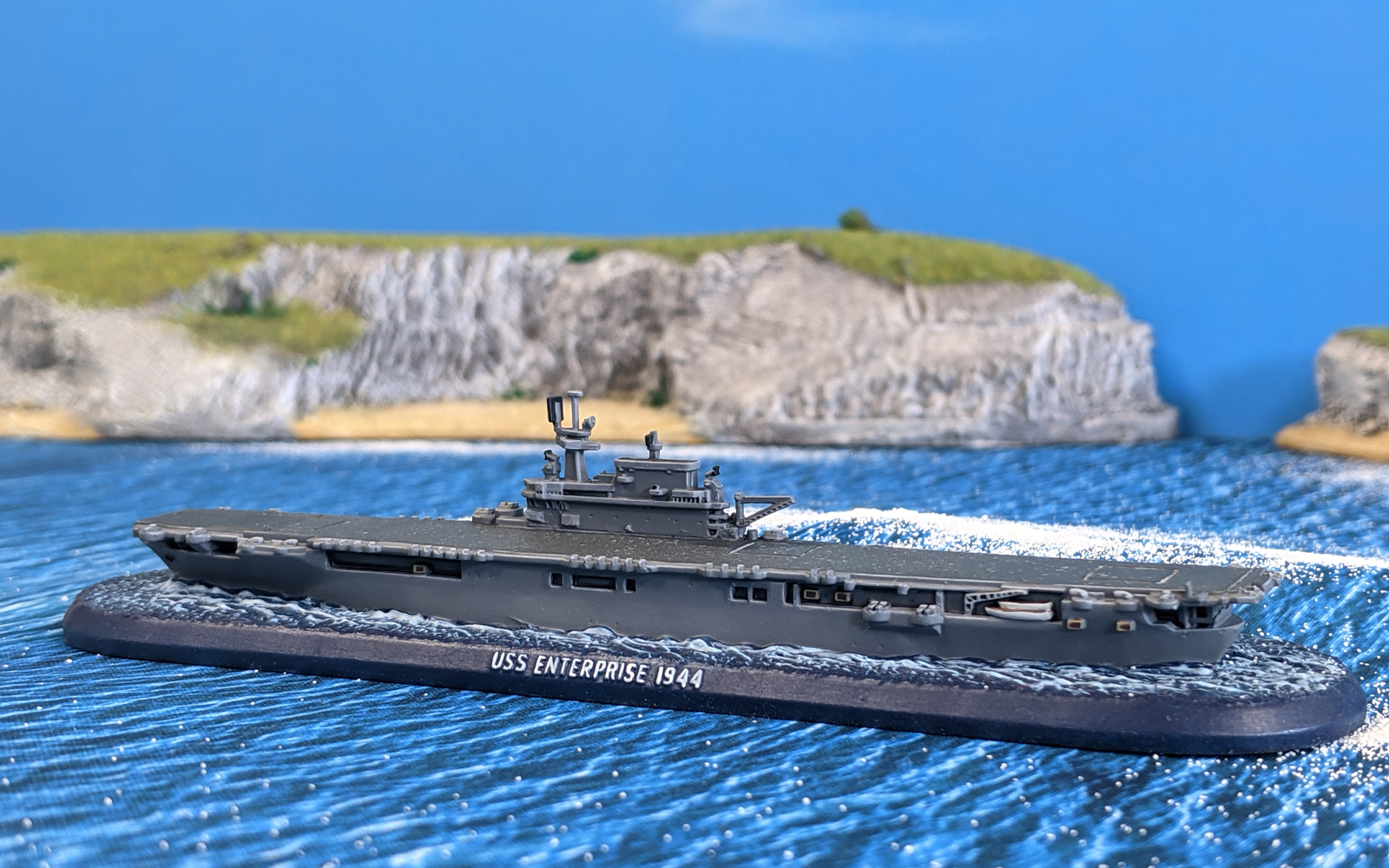
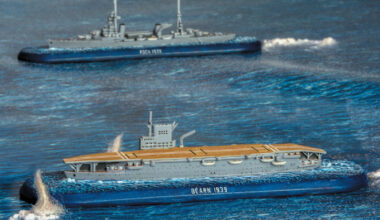
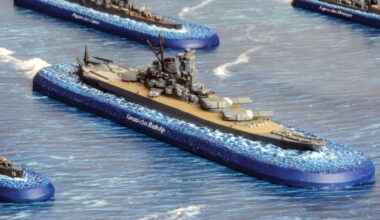
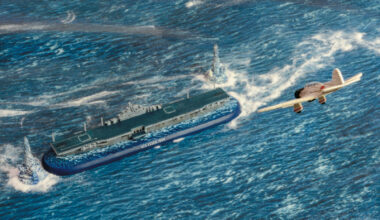
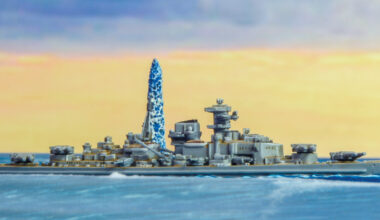
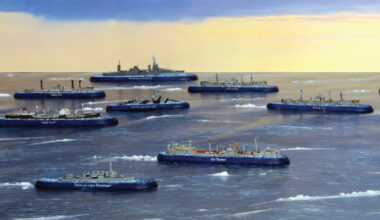
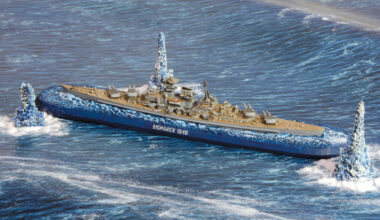
6 comments
When can we expect more cruisers & destroyers? I think we need more of those vessels, specifically US and British since the German fleet is about finished and the Japanese have some killer heavy cruisers.
Why the same class of ships again? Why not a new class? More light cruisers? Why so many carriers?
Any plans to release some Douglas SBD Dauntless dive bombers for the US? The US range is really missing a dive/torpedo bomber plane.
I understand sticking with classes for which the model/CAD design exists such as the last of the Yorktown class ( 3 of 3), the second of 5 KGV class and the second of 4 Kongo’s but Schleswig-Holstein? A relatively useless training vessel that I do not believe ever left the Baltic for a German fleet that is far more complete than any other while the largest navy in the world in 1939, Great Britain, has no heavy cruisers and the USN, the largest navy in the world by 1943 has no light cruisers seems misguided. The numerically large British County class CA was a constant workhorse and the equally large US Brooklyn class was heavily involved in most of the Pacific surface actions while the IJN still came out to fight. Given the US now has 4 fleet carriers available and the IJN 3, the lack of the ubiquitous B5N Kate and the G4M Betty for Japan and the SBD Dauntless, F4F Wildcat and TBF Avenger for the US seems puzzling as these aircraft are far more common and needed for far more scenarios than either the Hellcat or the Corsair.
I am a huge supporter of Warlord Games. It was awesome meeting Jon Russell at Twisted Lords here in Oklahoma a few weeks ago. My son and I are still patiently awaiting the HMS Rodney so we can accurately wargame the Hunt for the Bismarck. Thanks!
The Duca D’aosta was one of the classes I had hoped to see. The only thing that could make it better is if it comes out alongside the RE 2001’s.
Comments are closed.